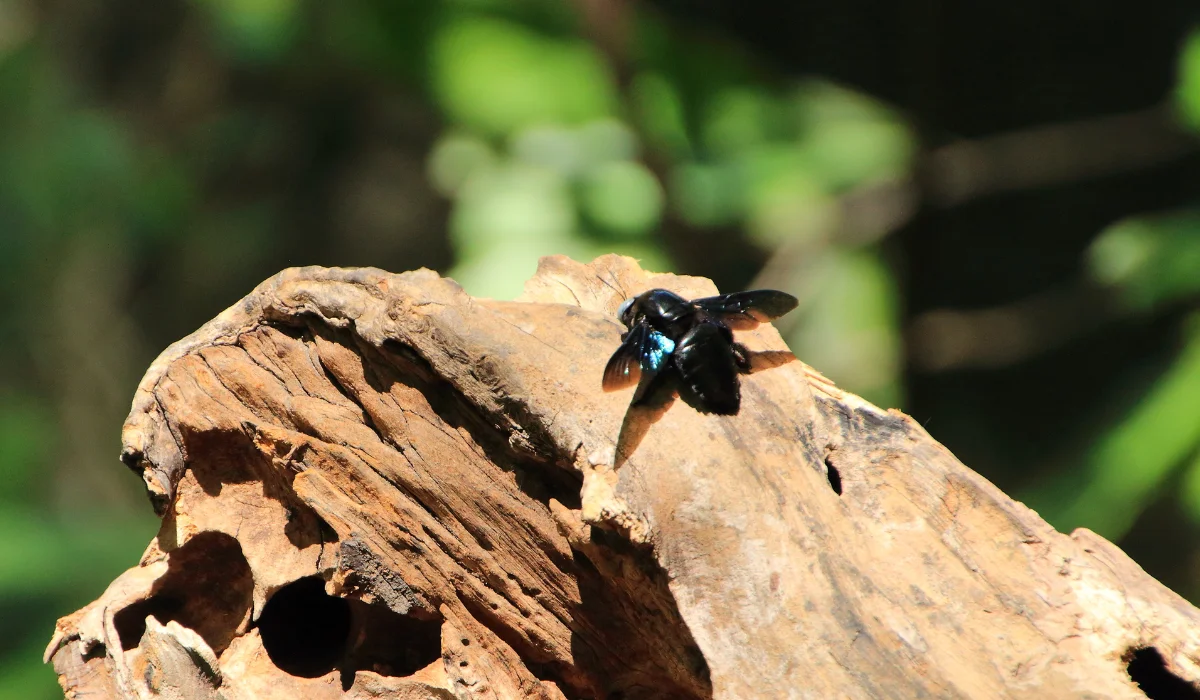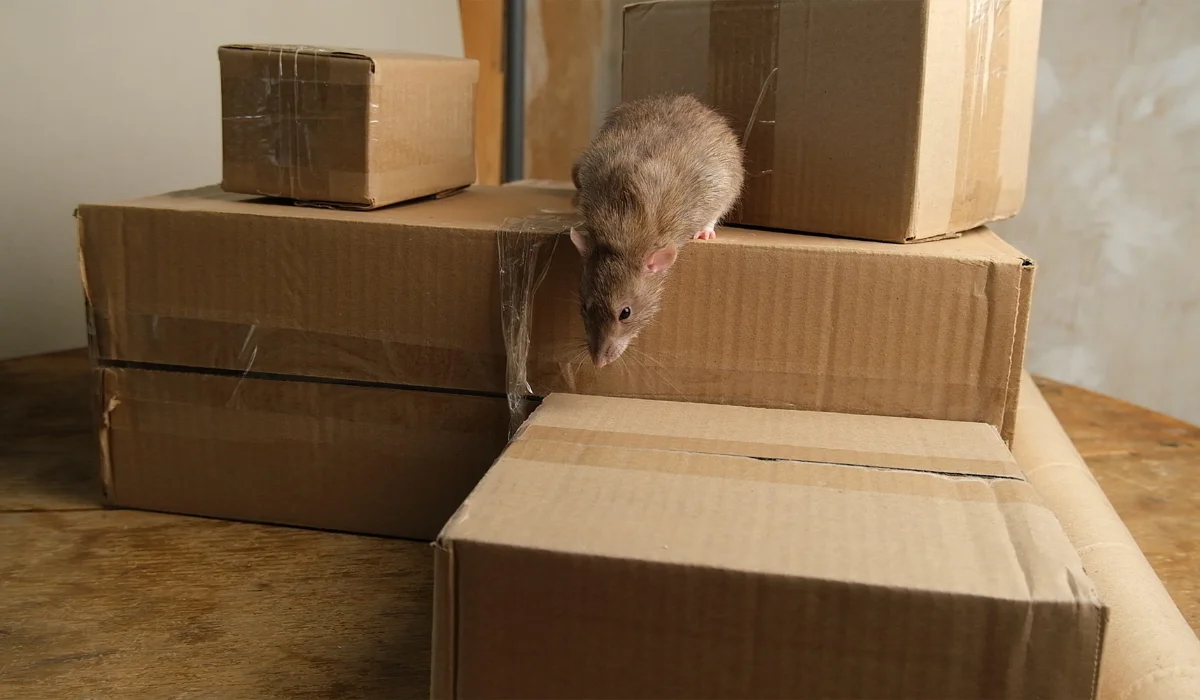Why do carpenter bees buzz so prominently around Louisiana homes each year? With their distinct black and yellow appearance, these bees have a knack for boring into wood, causing potential damage. This makes them a notable concern for homeowners.
For effective help, trust a reliable bee control service in Baton Rouge, LA to manage and protect your home.
Read on to discover effective ways to manage them around your home.
Key Takeaways
- Carpenter bees are large bees that dig into wood to make nests but help pollinate plants.
- These bees prefer softwoods like cedar or pine for nesting, where their tunneling can weaken structures over time.
- While female carpenter bees can sting if provoked, males cannot sting at all and pose no real threat.
- Treating wood, using decoys, and hiring pest control can help prevent carpenter bees from nesting in your home.
WHAT ARE CARPENTER BEES?
Carpenter bees are fascinating creatures known for being important pollinators in the wild. As solitary bees, they are among the largest native bees, with some unique behaviors and habitats that set them apart from other bee species.
Common Habitat
Carpenter bees are commonly found in areas where wood is abundant. They prefer softwoods for their nesting sites. Eaves, decks, or wood siding provide the ideal material for excavating their nests. Their habitat choice helps them overwinter so they can emerge when temperatures rise.
Seasonality
Carpenter bees tend to be most active during the warmer months. Particularly in spring, adult bees are focused on nest-building and reproduction.
Despite their wood-boring habit, they are important pollinators, contributing to the health of gardens and ecosystems.
DO CARPENTER BEES CAUSE DAMAGE TO LOUISIANA HOMES?
Carpenter bees are pretty selective about where they settle down. These bees usually go for softwood, such as cedar, pine, and redwood in Louisiana.
Wooden structures like decks and railings are prime real estate for them. They zero in on places with exposed wood where it’s easiest to start their tunnels.
Unlike termites, these bee species don’t eat the wood. They bore into it to create galleries for their nests. Sawdust often falls from these holes, a giveaway sign of their activity.
Over time, their nesting tunnels can weaken integrity, leading to more severe structural damage. What starts as a minor carpenter bee infestation might begin to affect larger sections of your home.
The continuous nesting cycles also mean their numbers can grow. Other signs, like small holes, could suggest an escalating problem, leading to more damage as more bees continue to nest.
If you’ve spotted these signs, it may be time to consult a New Orleans bee control inspector for a thorough assessment.
ARE CARPENTER BEES DANGEROUS TO HUMANS?
While they can be intimidating, carpenter bees rarely pose a significant threat to humans. Female carpenter bees are equipped with stingers but are not aggressive unless provoked or handled roughly.
They are more concerned with nesting and food collection than defending territory like other insects.
Male carpenter bees cannot sting at all. Their lack of stingers often surprises people. Despite their inability to sting, male bees tend to hover aggressively around perceived threats. But keep in mind, while they aren’t harmful to you, they can be harmful to your home!
Related: Are Carpenter Bees in Louisiana Dangerous?
HOW TO PREVENT CARPENTER BEES FROM NESTING IN YOUR HOME
Carpenter bees can be a nuisance for homeowners in Louisiana. Here’s how you can stop them from settling in your property:
- Treat exterior wood surfaces with paint or stain regularly to deter nesting.
- Close off any existing holes or cracks in wooden structures.
- Sheathe wooden components with metal or vinyl to make them less accessible.
- Use decoy carpenter bee nests to mimic existing bee colonies.
- Use bee traps near trouble areas to catch those attempting to set up nests.
WHEN TO CALL PEST CONTROL PROFESSIONALS
If you notice woodpeckers frequently pecking on wooden surfaces, it could suggest they are feeding on bee larvae inside the wood. Call in pest control professionals for assessment and tailored long-term solutions.
Whether you’re in Baton Rouge or New Orleans, seeking expert help should be easy. For immediate intervention for a severe infestation, let LaJaunie’s specialists in bee control in Louisiana tailor a solution that’s right for your home.
For more information about our services, visit our service page.
Related: What Are the Signs of Carpenter Bee Damage?
Related: Bumble Bees vs. Carpenter Bees: What’s the Difference?
 By: LaJaunie's Pest Control
By: LaJaunie's Pest Control 



